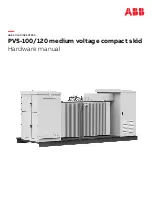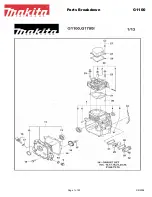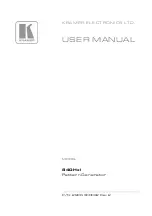
NO.6 Detailed Function Description
65
6.9 PID function parameters
P156
Setting range
Unit
Ex-factory value
Alteration
Proportional constant (P)
0.0-1000.0%
0.1%
100.0
○
Error value gain is set for proportional constant; in case of I=0 and D=0, only proportional
control shall be actuated.
P157
Setting range
Unit
Ex-factory value
Alteration
Integration time (I)
0.1-3600.0s
0.1s
5.0
○
Response speed of PID actuation is set via integration time (I); the larger I value is, the
slower the response speed is; contrarily, faster response speed and small integration time
shall cause the oscillation.
P158
Setting range
Unit
Ex-factory value
Alteration
Derivation time (D)
0.01-10.00s
0.01s
0
○
The attenuation of PID actuation is set via derivation time (D); the larger D value is, the more
obvious the attenuation is; D=0 indicate that no effect is produced, that is, invalid.
P159
Setting range
Unit
Ex-factory value
Alteration
Target value
0-100.0%
1%
*
○
Control target value can be set via external voltage signal or panel, and 100% target value is
corresponding to the frequency at +10V analog.
PID closed-loop control is generally used for controlling the process with slow change in
physical quantity, such as controlling pressure and temperature; generally feedback signal is
acquired from temperature transmitter and pressure transmitter; during PID control, feedback
signal input channel is analog current signal of 4-20mA.
PID closed-loop control is valid during starting of multi-function input PID. Generally
adjustment method of PID control is as follows:
1) Correctly select the inverter, and use the inverter with the input specification in accordance
with standard signal of 4-20mA;
2) Correctly set target value;
3) In case of nonoscillatory input, increase proportionality constant P;
4) In case of nonoscillatory input, decrease integration time I;
5) In case of nonoscillatory input, increase the derivation D;
6) Refer to the descriptions in Figure 6-19/6-20 for specific application.
PID control block is shown in Figure 6-18:
















































